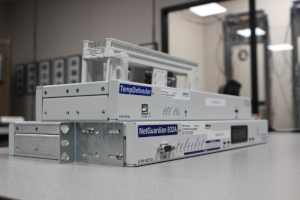Check out our White Paper Series!
A complete library of helpful advice and survival guides for every aspect of system monitoring and control.
1-800-693-0351
Have a specific question? Ask our team of expert engineers and get a specific answer!
Sign up for the next DPS Factory Training!

Whether you're new to our equipment or you've used it for years, DPS factory training is the best way to get more from your monitoring.
Reserve Your Seat TodayRemote Alarm Dialers (RADs) are essential in environments where traditional landlines or IP-based networks aren't practical or available. From water treatment facilities to military installations and public transportation depots, these radio-based alarm systems provide a dependable communication backbone for life-safety and infrastructure alerts.
But there's a persistent blind spot in many RAD implementations - and it's not the radio hardware, the power supply, or even the software. It's the antenna.
In fact, in many deployments, once an antenna is installed and aligned, it's never looked at again. There's often no telemetry, no visibility, and no active alarm if something goes wrong. Unless the radio link fails completely, you may never know that your antenna has degraded - or that your backup path has silently dropped offline.
Why are antennas often overlooked? How can this oversight lead to catastrophic communication failures? What can you do to fix it using advanced monitoring tools?

RAD systems are built on the premise of reliable wireless communication. These radio alarm dialers are designed to transmit alarm data from remote field sites to a central receiver or master station. Every link in that communication chain must function properly, though. The antenna is where it all starts (and can easily fall apart).
Some of the most common issues that plague RAD antennas include:
This is the silent failure mode that many teams only discover after a post-incident review.
It's tempting to assume that if your radio is online and not actively throwing an error, then the system must be fine. Sadly, this assumption is built into many legacy alarm systems. It's a dangerous one for a few reasons:
This lack of visibility creates a false sense of security. When the time comes that an alarm must travel over that RAD link, you may not get the message since the antenna gave up weeks ago.
Modern monitoring isn't just about catching failures. It's about predicting and preventing them. That means moving from reactive to proactive.
An effective antenna monitoring system for RAD deployments should:
This includes:
These should be updated continuously and recorded in logs for later review.
You should receive a notification not just when the radio fails, but when:
That way, you get a heads-up before things go sideways.
Antenna performance degrades gradually. By logging signal strength over time, you can identify seasonal trends (such as ice buildup in winter) or slow failures due to cable corrosion.
There's no reason to build an island. Your antenna monitoring should integrate into your existing SCADA, alarm management, or facility dashboard system.
When integrated properly, the antenna becomes just another monitored asset - no different than a pump, HVAC system, or generator.
While many platforms treat antennas as passive accessories, DPS solutions integrate antenna and communication link health directly into your alarm monitoring ecosystem.
There are a few ways DPS devices give you the real-time insight you need to keep your RAD links fully operational.
The NetGuardian series isn't just about collecting alarms. These remote telemetry units (RTUs) also gather signal and communication data that's critical to maintaining reliable RAD operation. When paired with a T/Mon Master Station, your antenna becomes a fully monitored asset.
With this setup, you can:
In addition to this, DPS NetGuardians support external telemetry inputs, so you can integrate environmental sensors, inline RF analyzers, or other health indicators from antenna enclosures or towers. That gives you total visibility (whether it's a single antenna or an entire multi-path network).
Your remote field sites are where communication issues often start, but they're also the hardest to reach. With DPS NetGuardians deployed at each site, you get local intelligence that pushes antenna health data back to your central T/Mon server.
This gives you:
Whether it's a public safety site, utility plant, or a DoD installation, NetGuardians keep your RAD system transparent and your operations secure.
Off-the-shelf monitoring doesn't always cover real-world complexities. We understand that after several decades of working in this space.
That's why we provide custom engineering and integration options to tailor your antenna monitoring to your unique deployment:
Whether you're protecting life-safety systems or critical infrastructure, DPS builds antenna monitoring solutions that fit your environment - not the other way around.
It's easy to focus on the radios, the data, or the software, but the antenna is what gets your signal into the air. Without it, nothing can be reported.
The truth is, antenna failure is one of the most overlooked - and dangerous - vulnerabilities in RAD-based systems. And since these failures don't always produce immediate outages, they can lurk undetected for weeks or months.
By using DPS NetGuardians with a T/Mon Master, you're not just watching for alarms - you're monitoring the entire communication path, from antenna to central receiver.
If your RAD system isn't watching its own communication path, you're operating blindly. One small cable issue or weather-damaged antenna could cause you to miss a critical alert.
DPS can help you fix that.
Call 559-454-1600 or email sales@dpstele.com to learn more about integrating antenna monitoring into your infrastructure or schedule a system review customized to your environment.

Andrew Erickson
Andrew Erickson is an Application Engineer at DPS Telecom, a manufacturer of semi-custom remote alarm monitoring systems based in Fresno, California. Andrew brings more than 18 years of experience building site monitoring solutions, developing intuitive user interfaces and documentation, and opt...